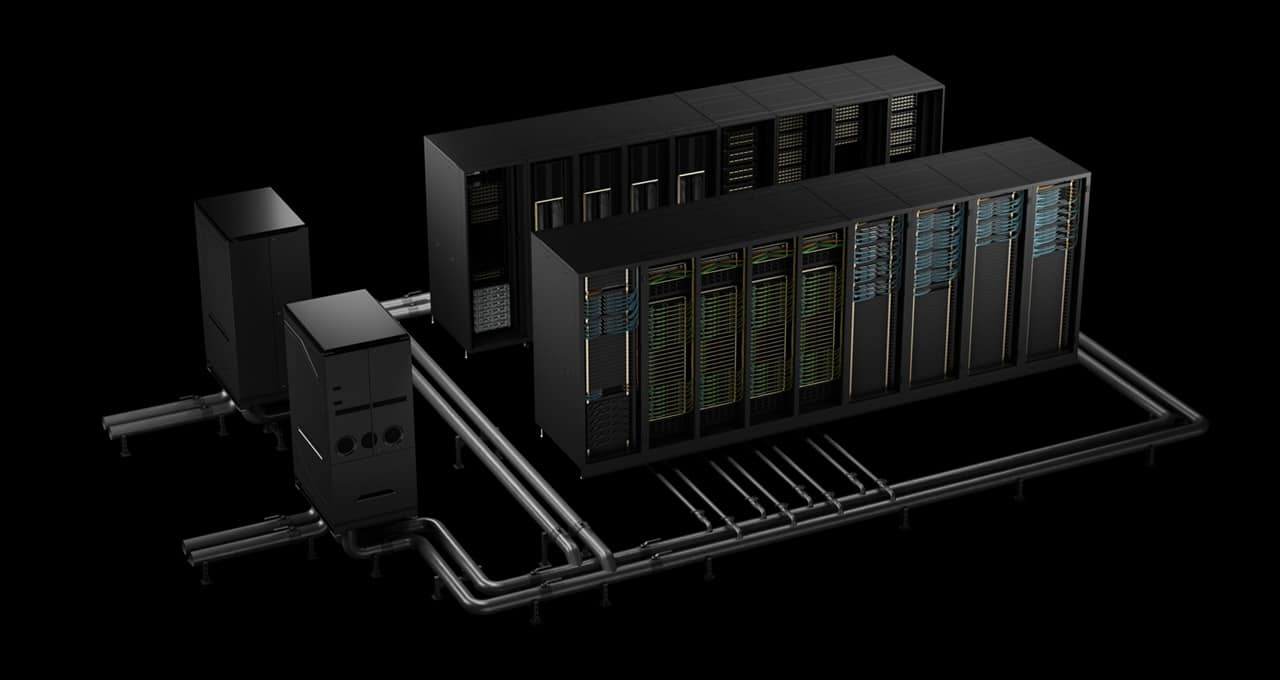NVIDIA’s new architecture reaffirms its leadership in AI with unprecedented performance improvements and support for 4:2:2 professional video workflows
NVIDIA has reestablished its position at the forefront of the artificial intelligence sector by achieving top results in the latest edition of the MLPerf Training v5.0 benchmark. The company is the only one to submit results across all tests, solidifying its Blackwell platform as the new benchmark standard for large-scale workloads, including large language model (LLM) pre-training, object detection, recommendation systems, and graphical neural networks.
The new NVIDIA Blackwell processor, the heart of this revolution, has not only doubled performance compared to the previous generation (Hopper) but has also demonstrated exceptional efficiency due to innovations in architecture, memory, and connectivity. With its debut in MLPerf, Blackwell has showcased performance that is 2.2 times superior in pre-training Llama 3.1 with 405 billion parameters and 2.5 times better in fine-tuning tasks (LoRA) on Llama 2 70B compared to systems with H100 GPUs.
Two Supercomputers Driving Change
The results were achieved on two supercomputers designed with Blackwell architecture: Tyche, based on GB200 NVL72 rack-scale systems, and Nyx, built with NVIDIA DGX B200 systems. Both combine Blackwell GPUs with NVIDIA Grace CPUs and fifth-generation interconnect architecture (NVLink and NVLink Switch), along with InfiniBand Quantum-2 networks for unprecedented scalability.
Additionally, NVIDIA partnered with IBM and CoreWeave to conduct a large-scale test with 2,496 Blackwell GPUs and 1,248 Grace CPUs, demonstrating the viability of training next-generation multimodal models at an industrial scale.
Boosting AI “Factories” and the Economy of Intelligent Agents
The Blackwell architecture is not limited to model training. NVIDIA envisions it as the foundation for future “AI factories,” infrastructures designed to continuously generate artificial intelligence. These factories will be crucial for applications based on autonomous agents, capable of reasoning, executing complex actions, and operating in real-world environments.
To support this vision, the company provides a comprehensive ecosystem with optimized software: CUDA-X libraries, the NeMo framework, TensorRT-LLM, NVIDIA Dynamo, and specialized tools for training and inference of LLMs in local and cloud environments.
Professional Video Editing and AI-Accelerated Workflows
Beyond model training, Blackwell is also transforming content creation. Its GeForce RTX 50 Series and NVIDIA RTX PRO GPUs offer native support for 4:2:2 10-bit video, a standard that doubles color fidelity compared to the usual 4:2:0, and is becoming popular in professional cameras below 600 euros.
With dedicated hardware for 4:2:2 encoding and decoding, the new GPUs allow editing of up to 10 simultaneous 4K 30fps video streams without the need for proxies. Applications like DaVinci Resolve Studio 20, Adobe Premiere Pro, CapCut, and Topaz Video AI are already benefiting from this acceleration.
The fifth-generation Tensor cores introduce support for precision formats like FP4 and FP6, optimizing the performance of generative video models like WAN, LTX Video, and Topaz Starlight Mini, which can enhance resolution, remove noise, and apply cinematic-quality effects.
Faster, Smarter, and Higher Quality
Among the most notable software improvements is the new UltraNR Noise Reduction feature in DaVinci Resolve, which, when run on an RTX 5090 GPU, offers 75% more performance compared to the previous generation. Furthermore, Adobe Media Intelligence enhances the organization of recorded material through semantic tagging, and its Enhance Speech feature increases audio processing speed by seven times on the RTX 5090 compared to the MacBook Pro M4 Max.
A Generational Leap for Content Creators
NVIDIA is poised for a new era where professional editing, generative artificial intelligence, and language models will coexist in workstations and personal PCs equipped with Blackwell. With support for 4:2:2 video and acceleration for the most demanding creative workflows, the architecture offers tools designed not just for researchers but also for filmmakers, designers, and developers.
NVIDIA CEO Jensen Huang will present these advancements at the GTC Paris conference on June 11, accompanied by technical sessions and hands-on workshops.
The Blackwell architecture is no longer just an evolution. As evidenced by its role in MLPerf and in the creative industry, it represents the new standard for building, training, and creating with artificial intelligence.
Source: blogs.nvidia.com

